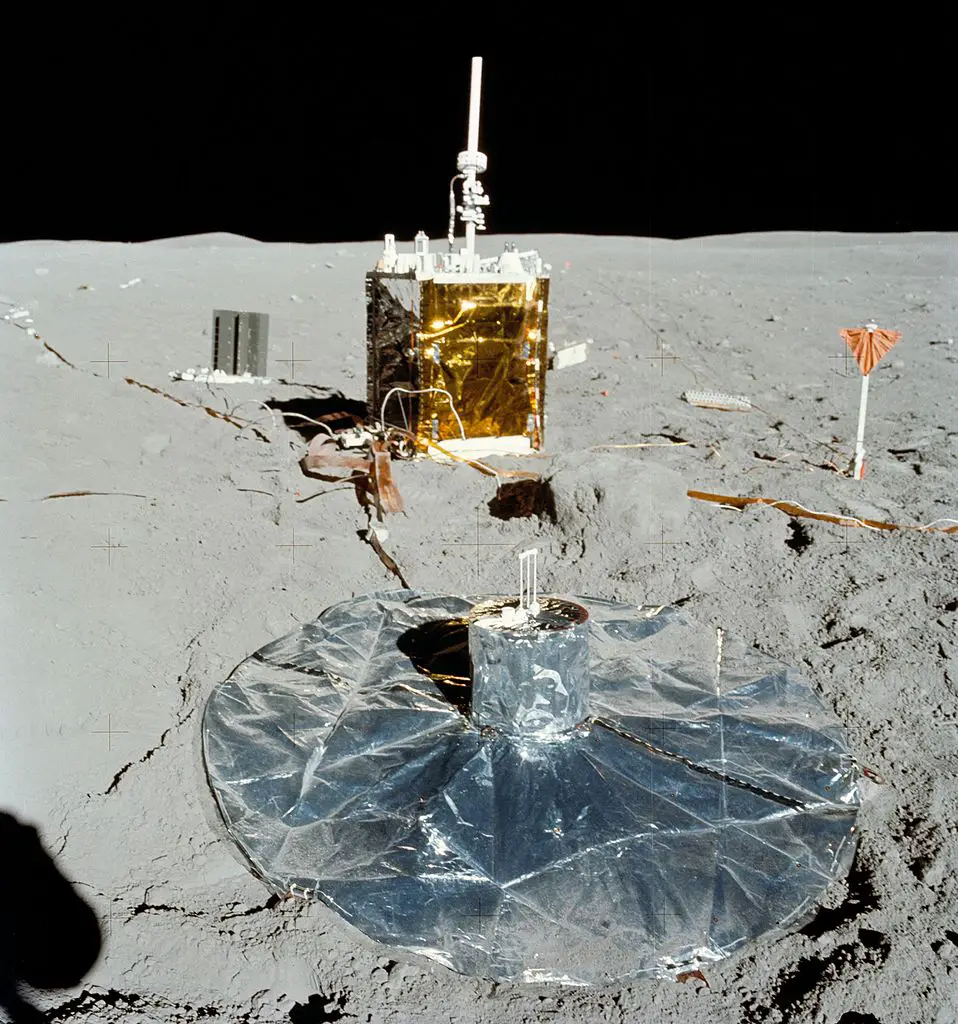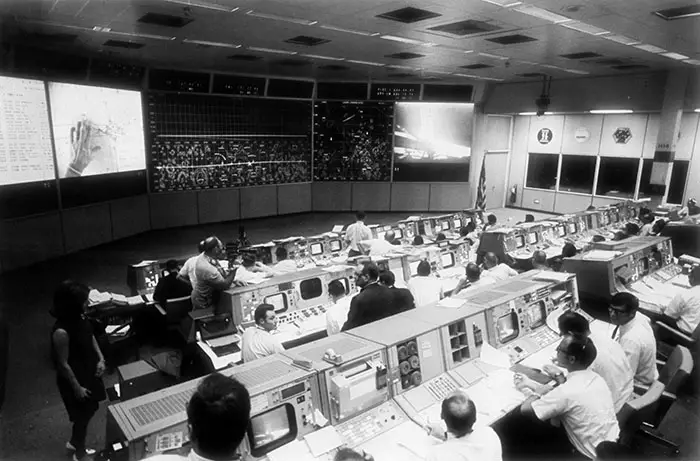From 1958 to 1969, Michigan contributions to US space program played a pivotal role in America’s lunar missions. The state’s manufacturing prowess and engineering expertise contributed significantly to the U.S. space race, culminating in the successful Apollo missions that placed astronauts on the moon. Michigan’s contributions spanned various industries, including automotive and aerospace, and involved key institutions and companies. This article delves into the six main areas where Michigan made a substantial impact.
Table of Contents
Chrysler Corporation: Building the Foundation for Space Travel
The Chrysler Corporation, headquartered in Detroit, produced the first-stage booster for the Saturn I and IB rockets, known as the S-IB stage. These rockets served as essential launch vehicles, testing Apollo spacecraft in Earth orbit before the actual lunar missions took place.

Development of the Saturn 1B
Chrysler’s work with the S-IB stage provided vital data and expertise in launching heavy payloads. This work laid the groundwork for developing the more powerful Saturn V rocket, which ultimately carried astronauts to the moon. Chrysler’s role in this endeavor highlighted Michigan’s capability for high-precision, large-scale manufacturing—a testament to the state’s critical role in supporting NASA’s ambitious objectives.
By utilizing its extensive manufacturing infrastructure and expertise in precision engineering, Chrysler transitioned from automotive production to aerospace technology, embodying Michigan’s adaptability and dedication to the national cause of space exploration.
The Saturn IB rocket launched Apollo 7, the inaugural crewed mission of the Apollo Program. It was also used to test preliminary hardware for the Apollo missions prior to the availability of the Saturn V rocket. Following the conclusion of the Apollo Program in 1973, the Saturn IB launched three missions to the Skylab space station.
Source: “Chrysler helped power NASA to the moon” – Stellantis Blog
General Motors (GM): Navigating to the Moon
The AC Spark Plug Division of General Motors, while headquartered in Milwaukee, Wisconsin, maintained strong ties to Michigan due to the company’s overall operations. GM’s division was instrumental in developing the primary components of the Apollo Guidance and Navigation System, which included the onboard computer that guided the Apollo spacecraft throughout its mission—from launch to lunar landing and back to Earth.
Development of the Apollo Guidance Computer

The project was led by the computer pioneers at the Massachusetts Institute of Technology’s Instrumentation Laboratory. However, much of the engineering work was carried out by AC and Kollsman Instrument Corp, while the defense contractor Raytheon was tasked with the actual construction of the AGC.
Precise navigation was essential for safely guiding astronauts to the moon and ensuring their return. GM’s engineering expertise demonstrated the impressive adaptability of automotive electronics for space exploration. This achievement showcased Michigan’s ability to innovate beyond the automotive industry, contributing to one of the most complex and critical systems in the Apollo program. The success of the guidance system illustrated the state’s technological versatility and commitment to pushing the boundaries of exploration.
Source: “How AC Spark Plugs helped get Apollo 11 to the Moon and back” – Hagerty
Bendix Corporation: Getting to and Conducting Tests on the Moon
Bendix Corporation, headquartered in Southfield, Michigan, was another key player in the Apollo missions. Bendix produced the landing gear for the lunar module, allowing for safe landings on the moon’s surface. In addition to the landing gear, the company built scientific instruments, such as seismometers, which were used during lunar missions to analyze the moon’s internal structure and seismic activity.

Development of the ST-124-M3 inertial platform & Lunar Surface Experiments Package
The ST-124-M3 inertial platform measured the acceleration and attitude of the Saturn V launch vehicle. The ST-124 stabilized platform played a crucial role in the Saturn V’s guidance, navigation, and control system. The data collected by the ST-124 were utilized by the Launch Vehicle Digital Computer, another component of the Instrument Unit, to compare real-time flight data with pre-programmed flight plans and compute necessary guidance corrections.

Bendex Develops the Apollo Lunar Surface Experiments Package
In 1966, NASA chose the Bendix Aerospace Systems Division in Ann Arbor, Michigan, to handle the design, manufacturing, testing, and operational support for the Apollo Lunar Surface Experiments Package (ALSEP). This package included a collection of scientific instruments that astronauts deployed at the landing sites of the five Apollo missions that followed Apollo 11—specifically, Apollo 12, 14, 15, 16, and 17. In contrast, Apollo 11 left behind a smaller package known as the Early Apollo Scientific Experiments Package, or EASEP.
Source: “Bendix Corporation” – Wikipedia
University of Michigan: Academic Contributions to Space Exploration

Researchers and engineers at the University of Michigan played significant advisory and technical roles in various aspects of NASA’s research and development efforts. Their contributions spanned areas such as aeronautics, spacecraft design, and guidance systems, bringing academic expertise to the forefront of the space race.
The Multi-faceted Role of the University of Michigan With the Apollo Program
The University of Michigan has played a significant role in Apollo space exploration through its alumni, faculty, and research:
Research
The University of Michigan Space Institute supports space medicine research and education. The SPRL team at the University of Michigan developed instruments to support research of the sun, Earth’s atmosphere, moon, and other planets.
Astronauts
Several University of Michigan alumni became astronauts, including:
- Ed White: Performed the first spacewalk in 1965 during the Gemini IV mission
- James McDivitt: Commanded the Gemini IV and Apollo 9 missions and later worked at NASA to build and manage the space program
- Jack Lousma: A crew member on the Skylab 3 space station and commanded the third space shuttle mission
Apollo 15 All Michigan Crew
The Apollo 15 mission was the first to have an all-University of Michigan crew, consisting of David Scott, James Irwin, and Al Worden. The mission was also the fourth lunar landing and the first to use the Lunar Roving Vehicle.
Faculty
Professor Harm Buning, an expert on space vehicle motion, taught orbital mechanics to NASA astronauts.
Ford Motor Company: Mission Control Across the Stars

Ford Motor Company played a pivotal role in the success of the Apollo 11 moon landing by developing and maintaining the NASA Mission Control Center in Houston. This collaboration began with Ford acquiring Philco in 1961, a company with innovative expertise in high-speed computing and electronics. As Philco-Ford, they secured the prime contractor role to create Mission Control, designing complex hardware and software systems critical for managing space missions. Their contributions enabled the real-time transmission of astronaut communications, such as Neil Armstrong’s famous words from the lunar surface. They ensured seamless mission monitoring, integrating thousands of miles of wiring, telemetry systems, and cutting-edge mainframe computers.
Ford Aerospace – Beyond Mission Control Systems
Philco-Ford’s involvement extended beyond Apollo 11, contributing to other space missions such as Apollo 8 and ongoing lunar experiments. Their work laid a technological foundation for modern space exploration and evolved into Ford Aerospace, a major player in satellite communications. Ford exited the aerospace sector in 1990, but the legacy of their collaboration with NASA remains influential, symbolized by the iconic Mission Control Center. Today, Ford continues to innovate with advanced automotive technologies, drawing inspiration from their historic contributions to space exploration.
Source: Ford Philco and the Mission Control Center
Michigan/Apollo FAQs
What role did Chrysler Corporation play in the Apollo missions?
Chrysler Corporation produced the first-stage booster for the Saturn I and IB rockets, known as the S-IB stage. These boosters were critical for testing the Apollo spacecraft in Earth orbit, providing valuable data and experience that helped pave the way for the Saturn V rocket and subsequent lunar missions.
How did General Motors contribute to the Apollo guidance and navigation system?
General Motors’ AC Spark Plug Division developed key components of the Apollo Guidance and Navigation System, including the onboard computer that guided the spacecraft. This system was crucial for navigating the Apollo missions from launch to lunar landing and safe return to Earth.
How did the University of Michigan contribute to NASA’s Apollo missions?
The University of Michigan played a vital role by providing research and engineering expertise in aeronautics, spacecraft design, and guidance systems. Collaborating closely with NASA, the university produced the entire crew of Apollo 15—all UofM grads.
Final Thought About Michigan Contributions to US Space Program
From manufacturing rockets to guiding spacecraft and ensuring reliable lunar landings, Michigan’s contributions to the United States lunar missions from 1958 to 1969 were multifaceted and transformative. The collaboration between major automotive and engineering firms, academic institutions, and smaller manufacturing entities underscored Michigan’s ability to pivot from automotive innovation to support one of humanity’s greatest achievements—the Apollo mission to the moon. The legacy of these contributions remains a testament to the state’s indomitable spirit, engineering excellence, and unwavering commitment to exploring new frontiers.



